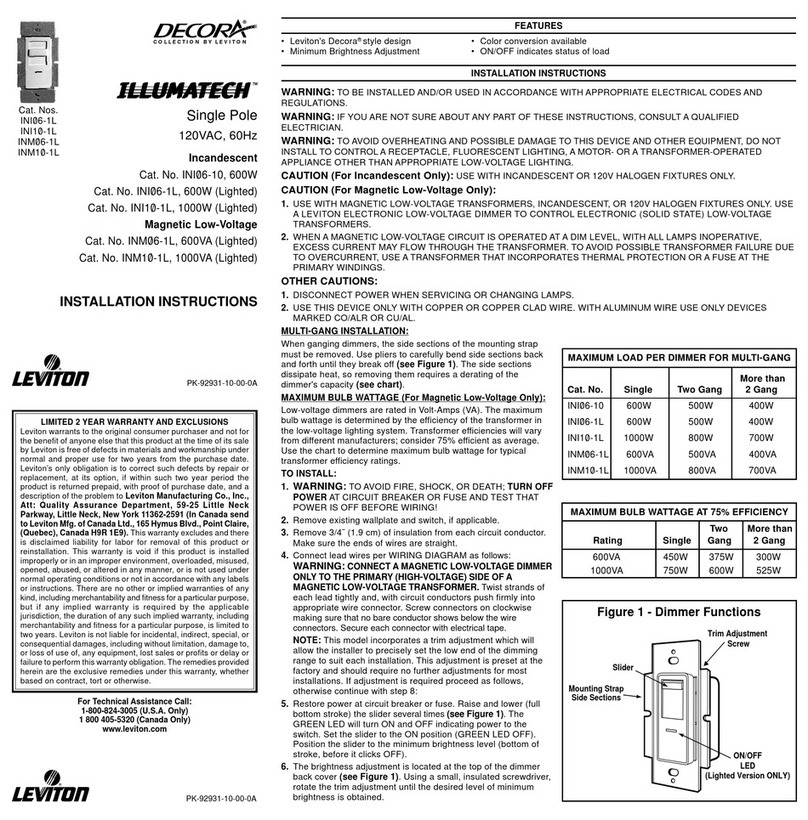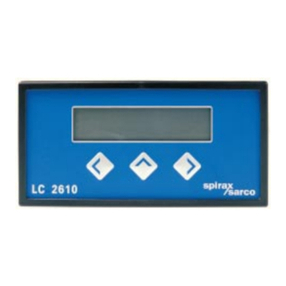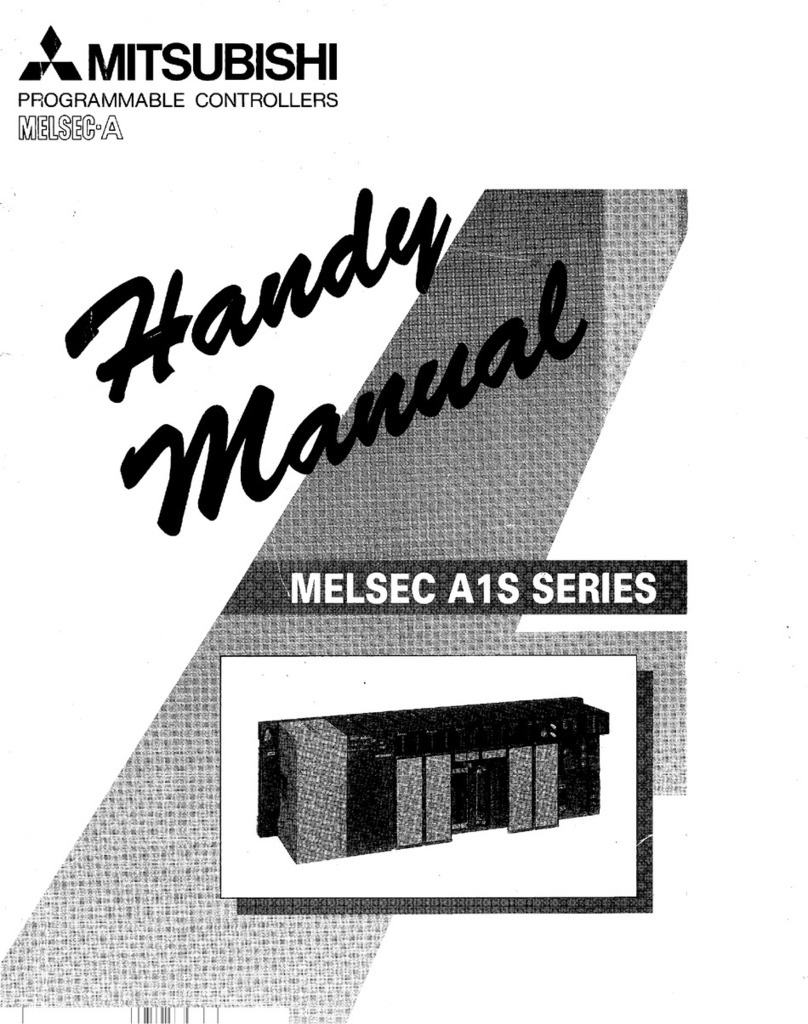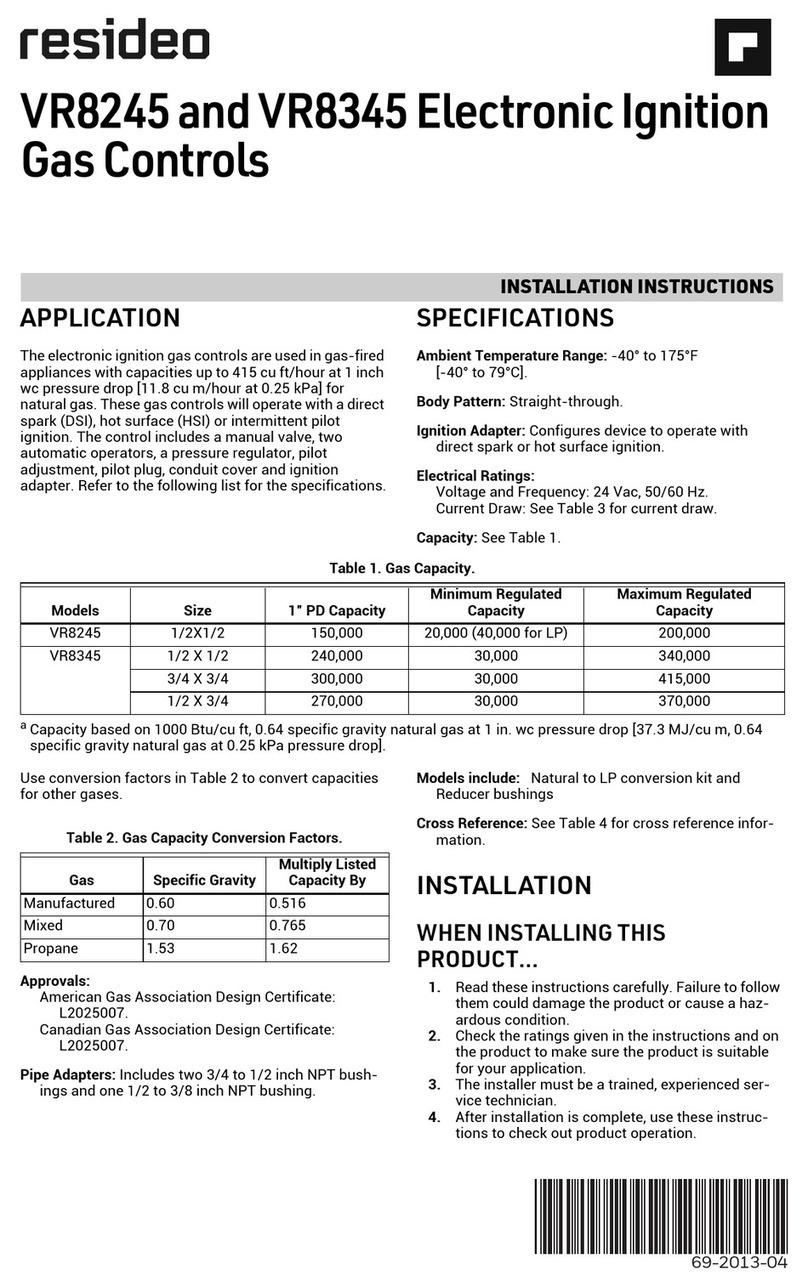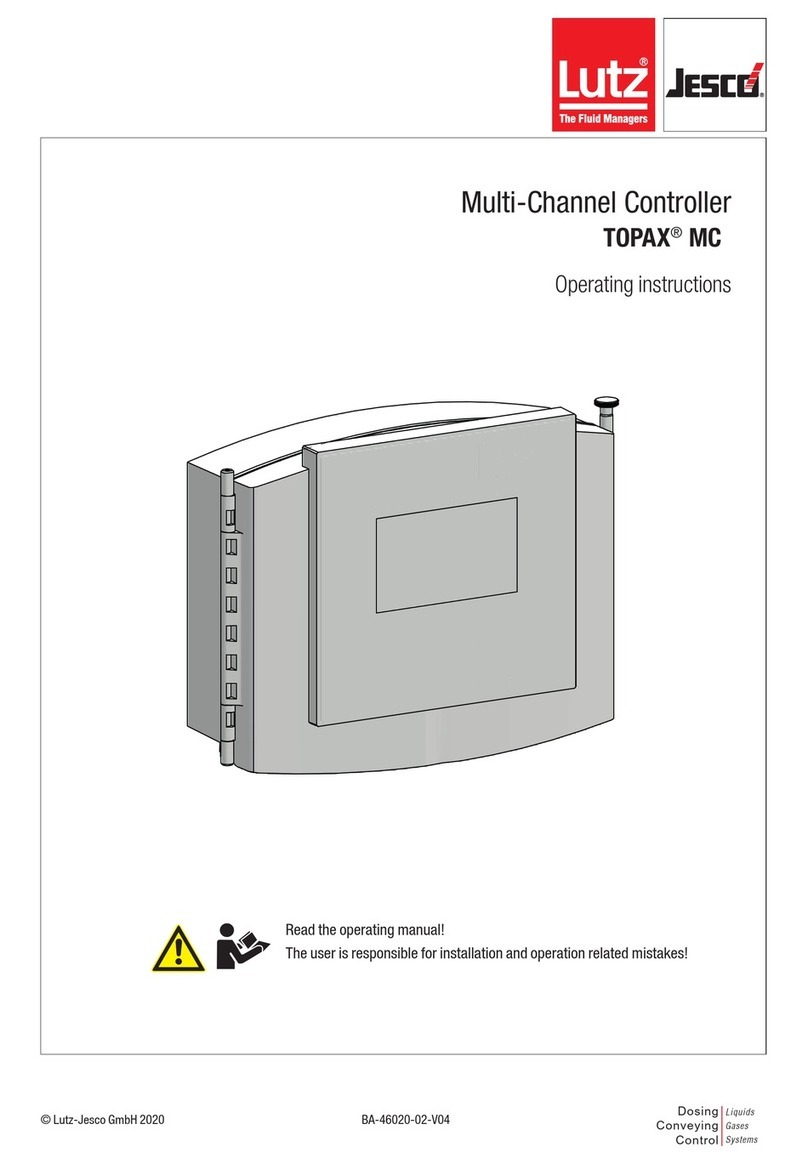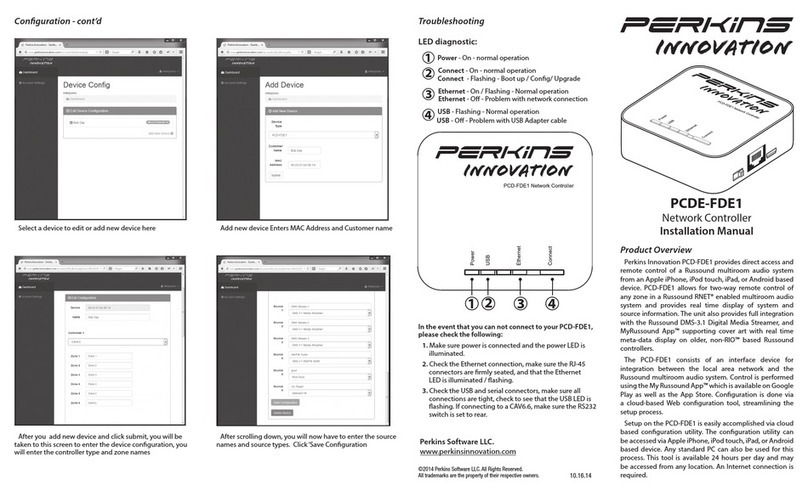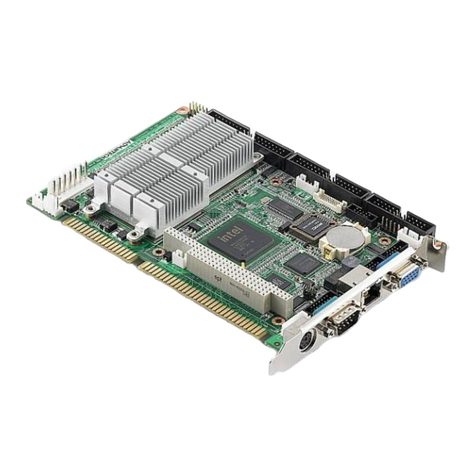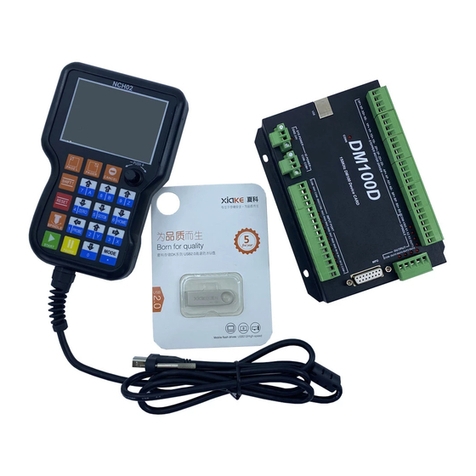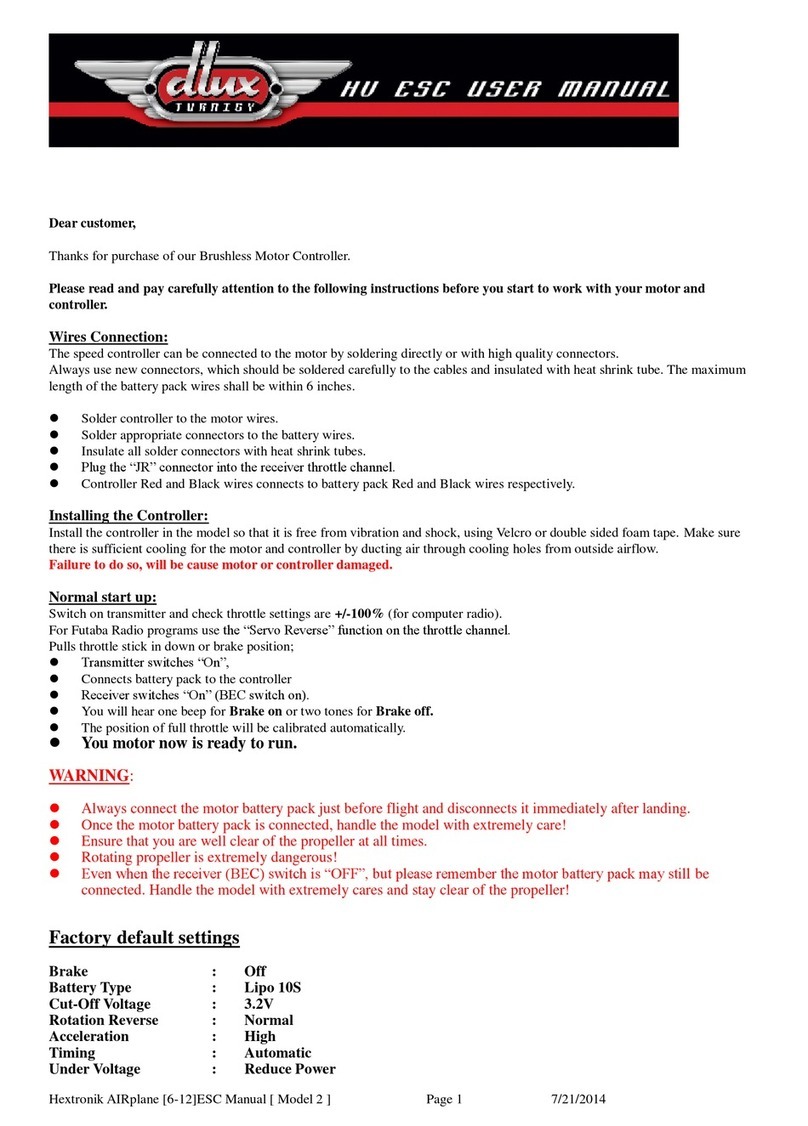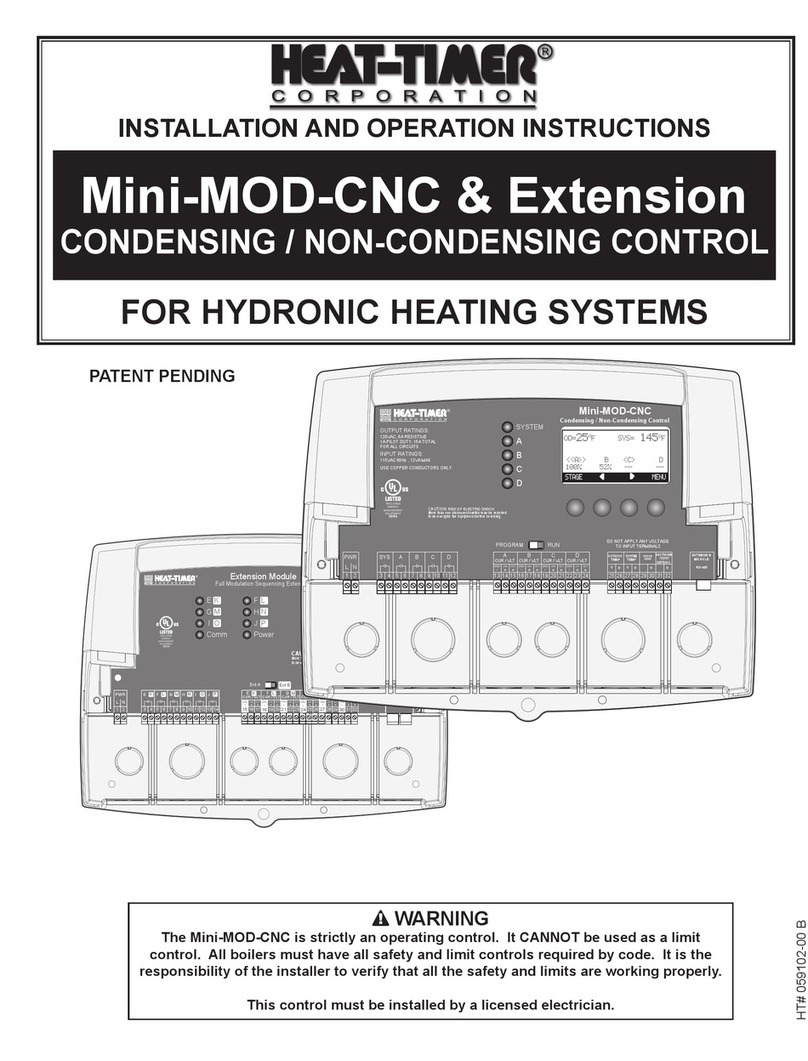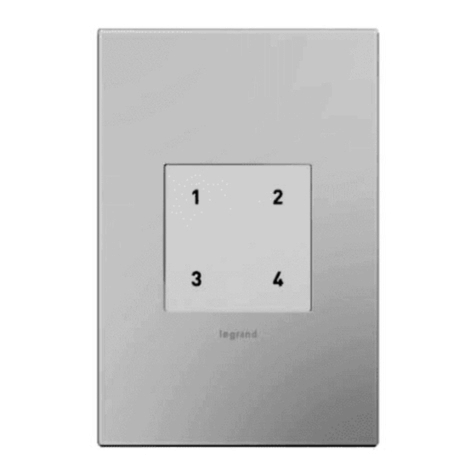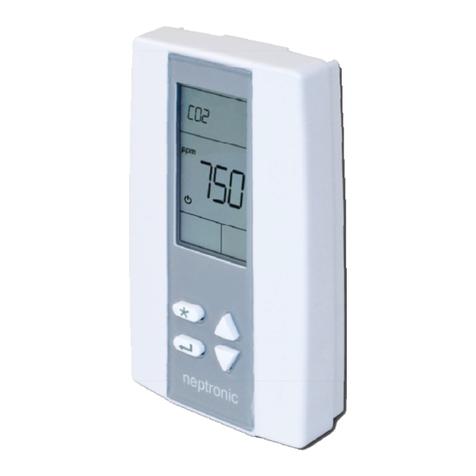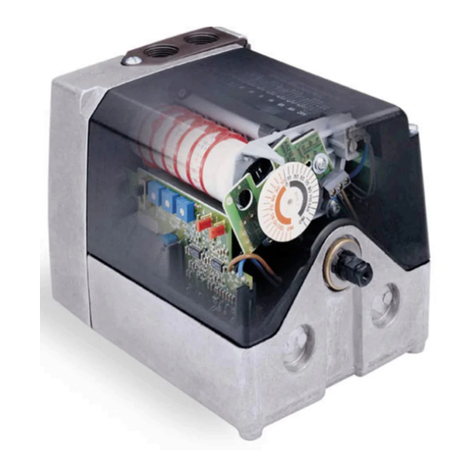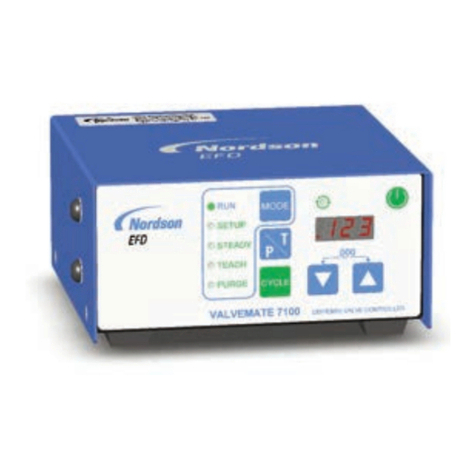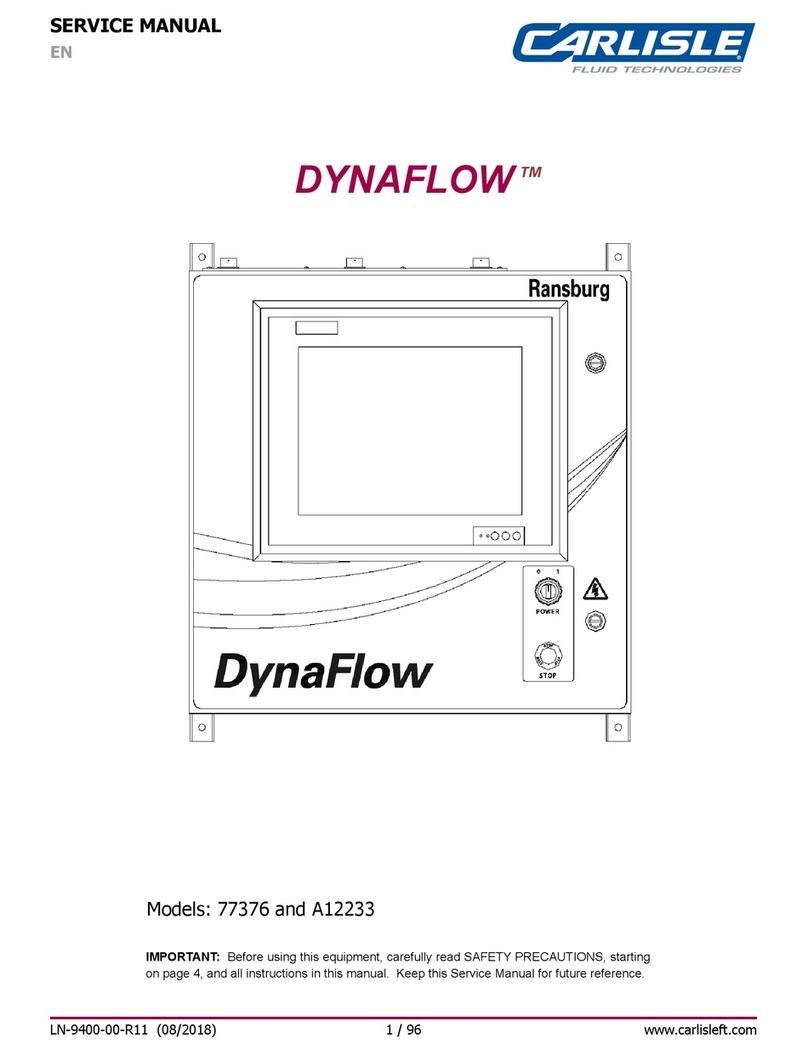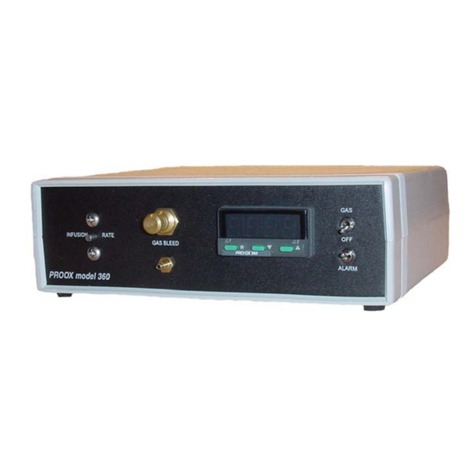
STEPS:
1. For on/off control, enter program
mode, navigate to "CYC.t"
function on level 1. Set "on.of".
Have to go down to "0" by
holding "*" button and pressing
down to get to "on.oF".
2. Then set dead band width. Index
down to "bAnd" function and set
distance between on-to-off point
and off-to-on point.
PROPORTIONAL CON-
TROL
Proportionalcontroleliminates
oscillation. It controls steady-state
byweakeningpowerascarbondiox-
idelevelapproachessetpoint. When
power (gas infused per unit time)
exactly matches load (gas leaking
out per unit time), carbon dioxide
stabilizes.
UnlikeON/OFF control where
poweriseither100%or0%,propor-
tionalcontrolcanadjustpowerany-
wherebetween100%and0%. Power
is adjusted by timing gas pulses.
"Proportional"meansgaspulsesget
proportionately smaller as the dis-
tancebetweencarbon dioxidelevel
and setpoint (SP1) gets smaller.
Pulses are timed by setting a
cycletimeandvariedbypercentage
of the cycle time. Maximum pulses
are 100% of cycle time. Minimum
pulsesare0%ofcycletime. Propor-
tionedpulses are in between.
Timedpulseproportioningoc-
cursonlyoveranarrowbandofcar-
bon dioxide levels centered around
setpoint. Control gas isinfusedfull
blast (100% output) with no timing
until it reaches this band. Then it
cycles. The deeper it goes into the
proportional band, the shorter the
pulses. Band size determines how
quickpulsesshortenandpowerthus
weakens.
Somewhere between 100%
and 0% of the cycle time there's a
pulse time that holds steady state.
However,ifproportionalbandistoo
small, it may not be easy to find.
Smallchangesincarbondioxidewill
causehugechangesinoutput,simi-
lartoON/OFFcontrol. Carbondiox-
ide will oscillate and never reach
steady state.
On the other hand, if propor-
tionalbandistoowide,proportioning
inhibitsapproachtosetpoint. Power
starts decreasing way to soon.
Proportional band should be
bigenoughsothere'snogrossover-
shooteverytimeproportioningkicks
in, but not so big that there's need-
lesspulsinglongbeforecarbondiox-
idelevelgetsevenclosetosetpoint.
Cycle time should be as long
as possible to minimize wear and
tear on equipment, but not so long
thatitbecomesunresponsive.
If no other control parameters
are set, proportional band centers
around setpoint SP1. All additional
parametersaccentuateproportional
control. Withoutproportionalcontrol
(prop.bandandcycletime),noother
parametersareactive. Someaffect
the position of the band, but not the
size. Some affect the size, but not
the position. None affect the cycle
time.
STEPS:
1. To tune proportional control, enter
program mode, navigate to
"CYC.t" function on level 1. Set
cycle time, anywhere from 0.1 -
81 seconds.
2. Then index down to "bAnd"
function and set proportional
band. Gas power is reduced, by
time proportioning action, across
this band centered around SP1.
3. Exit program mode to work mode
and watch control process. Note
whether process overshoots and
oscillates, or undershoots from
cycling long before reaching
setpoint.
4. Enter program mode, and
navigate to "bAnd" function
again. If process overshot and
oscillated, increase band size. If
process undershot and took long
to reach setpoint, decrease band
size.
5. Repeat steps 3-4 till steady state
is achieved, whether steady state
is at setpoint or not.
MANUAL OFFSET
Proportional band is basically
a "blind" control parameter. When
setalone,itpositionsitselfarbitrarilly,
centered around the setpoint.
Chancesaresteady-statewillnotbe
at setpoint.
If proportional control steady-
state is not at setpoint, the offset
mustbeeliminatedtomovesteady-
state to setpoint.
ManualOffset movespropor-
tional band by a fixed distance so
that steady-state is at setpoint. If
steady-state is +0.3% carbon diox-
ideabovesetpoint,thenanoffsetof
-0.3willmoveproportionalbanddown
sopulseisperfectlyproportionedto
match load at setpoint.
Manualoffsetworksgoodwhen
controllingagainstafixedload. Once
set, it makes proportional control
nearlyperfect. Noovershooteither.
STEPS:
1. Watch control process in work
mode till steady state is reached.
Note the variance from setpoint.
2. Enter program mode, navigate to
"oFSt" function on level 1, and
set number that offsets variance.
NOTE: "int.t" function on level 1
must be set to "oFF" to manually
adjust offset, otherwise "oFSt"
function is not active but read-
only.
INTEGRAL CONTROL
AUTOMATIC OFFSET
RESET
Proportionalcontroljobs,with
fluctuating loads require automatic
offset to keep steady state at
setpoint.
Integralcontrolparameterau-
tomatically and continuously moni-
tors divergences between setpoint
andsteadystate,andactstocorrect
offset by repositioning proportional
band.Changestheareabetweenset
point line and carbon dioxide level
line, and shifts proportional band in
proper direction to minimize area.
As load changes, steady state fol-
lowssetpointifintegralistunedprop-
erly. Integralcontrolovershootson
initial start up and after significant
interruptions. Farawayfromsetpoint
it senses big offset, so it shoots
proportionalbandasfaraspossible
in corrective direction. Only after
passing setpoint does integral pick
up the need to bring proportional
band back to near setpoint.
Integral control parameter is
time. Resetsoffsetasfrequentlyas
you specify. If integral time is too
short,itrecalculatestoomanytimes
beforecarbondioxide moves much
andmovesproportionalbandtoofar
toofast. Resultisoscillation. Even-
tuallyoscillationwilldampentosteady
state, if load hasn't changed yet.
If integral time is too long, it's
slow to respond. Steady state and
setpoint take a long time to merge.
15
ProCO2model120
version1.0




















